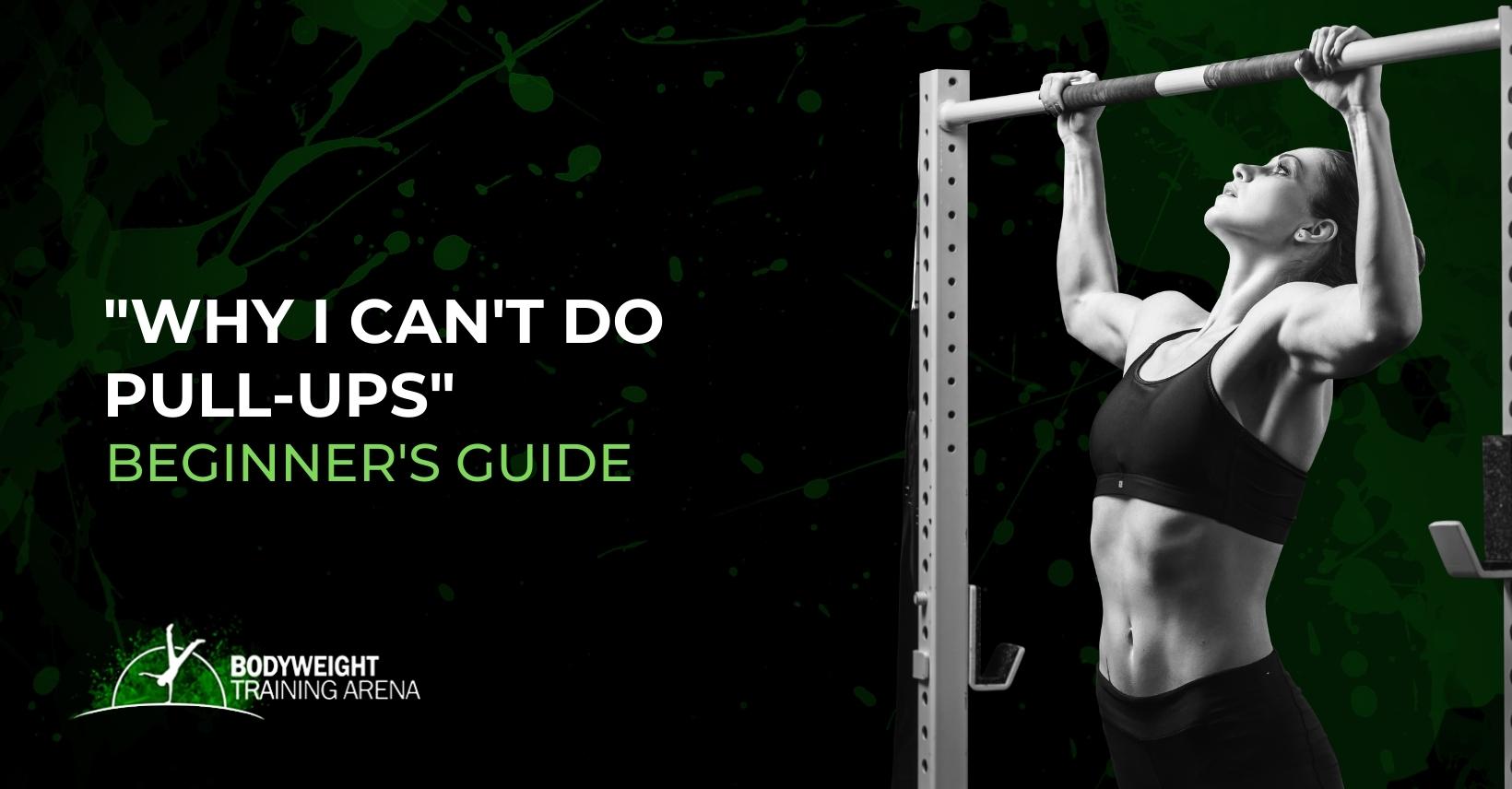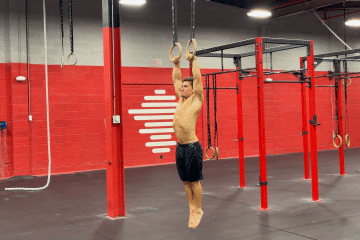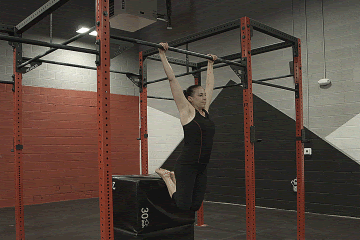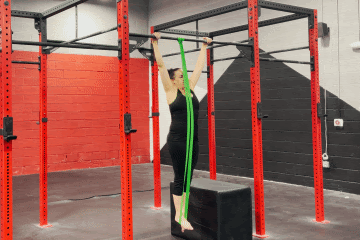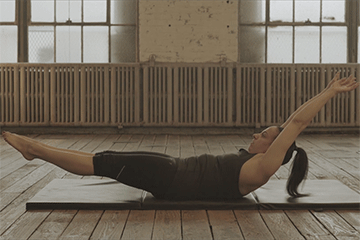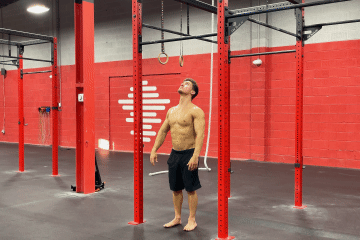I have never been able to do a pull-up in my younger years. I remember trying when I was in high school and barely being able to get my chin over the bar. I would always get so frustrated with myself because all of my friends could do them, and I felt like I was the only person who couldn’t. I always end up asking myself, “Why I can’t do pull-ups?!!” 🤔
Well, guess what? I’m not the only one!🥺 In fact, many people find themselves struggling to do pull-ups. This blog post is for those people. Today, we are going to explore why some people can’t do pull-ups and how they can go about fixing that!
In this article, we’re going to tackle:👇
- ✊ What is a pull-up
- ✊ Pull-up coaching pointers
- ✊ & Common reasons why you can’t do a pull-up & how to address them
Let’s get started!👊
✨ What’s a pull-up?
Before you dive in we strongly recommend watching these two videos.
-
- The Perfect Pull-Up Technique Demystified: Get ready to master the art of pull-ups, complete with insider secrets that will make you feel like a pull-up ninja. Trust me; you’ll be swingin’ like Spider-Man in no time.
Here we cover:
💪Muscles used
😃Benefits
⏰How long does it take to achieve Pull-ups
📜Prerequisites
🔥6 key techniques And don’t worry if you’re not a pro just yet – we all start somewhere, right?
-
- Pull-Up Blunders: 6 Common Mistakes: We’re going to dissect those funny (and not-so-funny) moments that might be holding you back from pull-up glory. Spoiler alert: you’re not alone in these blunders!
A pull-up is an upper body strength exercise. It involves pulling your body up from a hanging position using your arms. Pull-ups are a great way to strengthen your back, shoulders, and arms. It’s calisthenics and gymnastics fundamental. However, it’s not only for this discipline alone. It’s a highly functional movement that translates to better movement in everyday life.
There are many different types of pull-ups that you can do, but the general technique is performed with their palms facing down. However, other pull-up grip options are also viable and can also deliver similar general results for your posterior chain.
Read more here: 📍What is The Best Pull-up Grip
☝️Coaching pointers:
- Hands shoulder-width apart – You can make small adjustments based on what feels most comfortable for your shoulders
- Hips tilted backward for core engagement
- Scapula depressed and retracted during movement
- At least chin over the bar at the top position
- Don’t cheat jotting your head forward
- Full body tension
- Elbows close to the body
Muscles💪 used during pull-ups
The primary muscle groups used during a standard pull-up are your latissimus dorsi (lats), which are located on the sides of your back near your armpits. Your biceps, which are located on the front side of your upper arm and forearm, also play a big role in this movement.
Your pecs, deltoids, and trapezius muscles are all engaged to a certain degree as well. However, they are not used to the same extent as your lats and biceps.
The secondary muscle groups used during a pull-up include your forearm flexors, which help you grip the bar, and your core muscles, which stabilize your body during the movement.
🏆Benefits of pull-ups
There are many benefits that you can get from doing pull-ups. As we mentioned earlier, pull-ups are a great way to strengthen your back, shoulders, and arms. But that’s not all! Pull-ups also:
- Improve your grip strength
- Increase your shoulder range of motion
- Build muscles
- Increase general pulling strength
- Improve your posture
- Build strength transferable to pulling calisthenics skills
- Help maintain a balanced body – 📍How to Fix & Prevent Muscle Imbalance
- Help to prevent injuries
🔎Kipping vs Strict pull-ups
Kipping pull-ups are a variation of the standard strict version. In the kipping variation, you’re generating momentum from a swing from your lower body to make pulling up easier.
This is not cheating IF your goal is the kipping pull-up. But keep in mind that if you want to learn strict pull-ups, you’re only setting up for injuries if you went straight to kipping pull-ups.
Kipping pull-up has its own purpose which is primarily made for dynamic bar or ring movements once you have mastered the strict pull-up.
Read more: 📍Kipping pull-ups VS Strict Pull-ups
🧐Gymnastics rings pull-ups vs Bar pull-ups
Gymnastic rings are insatiable since they can move freely around in different directions. This makes force generation more difficult to attain. Plus rings are generally less comfortable to hold which isn’t ideal for beginners.
Beginners are recommended to start with a straight bar. However, if you have limited space, then there’s nothing wrong with pursuing ring pull-ups as long as you do them gradually.
Learn more about the difference here: 📍Gymnastic Rings Pull-up VS Straight Bar Pull-ups
Why you can’t do pulls?🤔
⚡️Problem: Lack of general upper body pulling strength
The main issue why most people can’t do pull-ups is the lack of general pulling mechanics. The pull-up requires you to pull around 95% of your body weight. Let’s say you weigh 100kg, you need to pull an estimate of 95kg using your body.
While pull-ups are considered a basic exercise, it requires a high amount of body strength. So it’s easy to see why most people can’t do them.
🧐Solution: Use the suitable pull-up progression according to your skill to build strength
If want to learn how to do pull-ups and nowhere near performing a good, clean pull-up, then you have to simply use an easier exercise that ultimately leads to a pull-up. This is called the 📍pull-up progression.
Progressions are a set of exercises with a gradual increase of intensity to bridge your skill and strength towards a specific skill. Pull-ups, squats, and especially advanced exercises all have progressions.
For pull-ups, here’s a brief of what exercises you should be using to build up strength:
- ✅ Inverted rows
- ✅ Banded pull-ups
- ✅ Negative pull-ups
For a comprehensive guide to the pull-up progressions, read here: Pull-up progressions: 📍How to get your first pull-up
⚡️Problem: Possible weak links
While the movement does recruit your latissimus dorsi (lats) to a great degree, it also heavily engages your biceps, rear delts, and even your core muscles. These are the prime movers of the exercise
However, there are also smaller muscle groups that also do a ton of work. The pull-up is a compound exercise that covers many muscle groups and joints. It’s basically a full-body movement.
This is why most people find themselves struggling with pull-ups and other variations such as pull-ups. There are many muscles being used to stabilize and move you in the exercise.
Here are common sticking points with pull-ups that you might be missing to address.
👎Weak grip
If you can’t hang long enough, then you have no chance of performing pull-ups. You would need to at least be able to hold 30 seconds of dead hang.
To address this, just hang on a bar! A dead hang is a great way to build grip strength and endurance and give you a free upper body stretch. Strengthening your grip correlates also to longevity, so you’re doing so much for your body than just preparing for pull-ups.
👎Weak scapula stability
As mentioned above in the pull-up instructions, performing the movement requires a scapula depression & retraction. This maximizes your pulling capacity and stabilizes your shoulders for safe and efficient pulling movement. Weakness in this area severely hinders your pull-up game.
Address this issue by performing scapula pulls to strengthen your shoulder blades. To do this, hang into a bar. Then pull your shoulders down away from your ears and pinch your shoulder blades together. Release into the dead hang again and repeat for reps.
You can also lower the intensity by starting on a horizontal bar as shown in the GIF above.
👎Weak biceps
While chin-ups emphasize bicep activation, the pull-up (overhand) grip still engages your biceps which might be a limiting factor for you.
🧐Solution: Address weak links directly with separate exercises
You can solve this issue by doing chin-ups in the meantime or by directly targeting your biceps with bicep curls. You can perform bicep curls with weights or with gymnastics rings which we highly recommend.
⚡️Problem: Weak relative strength
You might be confused about why you’re so strong with lat pull-downs, yet pull-ups still feel like an impossibility.
Both exercises seem similar, however, your lat pull-down gains aren’t 100% transferable to the bodyweight pull-ups. According to a study, the mechanics and compound nature of pull-ups aren’t being met by your lat pull-downs.
Pull-ups require full body activation plus a level of RELATIVE strength. This means you should be able to have a good level of strength RELATIVE TO YOUR BODY WEIGHT.
🧐Solution: Use pull-up progressions, don’t rely on weighted exercises
Yes, some gains from lat pull-downs, specifically your lat development, can help you do pull-ups, but you really have to still train the pull-up itself and its progressions if you want to master the skill.
Do the pull-up progressions. You may add lat pull-downs as an accessory exercise to isolate your lats, but this shouldn’t be your primary exercise for developing pull-up strength.
⚡️Problem: Weak core
Interestingly, an electromyograph analysis found that pull-ups have a high activation of your rectus abdominis. This is your abs AKA your “6-pack muscles” AKA your core.
Weakness in the area will generate energy leaks that will hinder you from pulling your body efficiently. Because the pull-up is a compound exercise, you need to have enough core strength to generate force from your torso to your hand unto the bar while stabilizing the whole body.
🧐Solution: Perform hollow body holds or planks
Want to fix a weak core? You don’t need to do the latest ab shredder or perform tons of sit-ups. One exercise is enough and this is the hollow body hold.
The hollow body hold mimics the core engagement of the pull-ups. It’s actually the position also for push-ups, dips, handstands, and other skills. This exercise has a high transferability of core strength to many exercises.
Train the hollow body hold and aim to achieve at least 3 sets of 30 seconds.
You can first use its progressions which are based on a body lever. Start from a tuck hold until you are able to extend your whole body.
Complete beginners may begin with the regular planks. The trunk position in planks is similar to a hollow hold. However, the hollow hold is more demanding and does not require shoulder stabilization so you can focus first on your core.
Learn here: 📍Best Calisthenics Abs Exercises
✔️Take note:
Pull-ups can be done by either arching the lower back which emphasizes the posterior chain more or a hollow body hold which translates better to specific skills such as the muscle-up and if the arch causes lower back pains.
⚡️Problem: Lack of technique
At first glance, pull-ups seem like a simple exercise. You just need to literally pull your bodyweight over the bar. However, there are more technical aspects in a pull-up that might be hindering you from learning the skill.
🧐Solution: Study & understand the technique
Learn the proper cues of a good form pull-up. Imagine driving your elbows towards your hips then back. This cue better recruits your posterior chain for a stronger pull game.
A good mind-muscle connection also helps. The mind-muscle connection is a technique used by bodybuilders to prime muscles for better activation. Just imagine your back muscles doing the work.
Visualization can also help you learn the skill. A study shows that visualization techniques during and outside training can help you increase your skill and strength for an exercise.
And the last, but equally important, practice the skill itself. If your goal is to learn and master the pull-up, then your efforts should be directed towards this goal. Too many additional exercises that are not geared towards pull-ups (for example doing non-related weight training exercises or learning planches) will take so much of your energy and hinder you from learning pull-ups.
⚡️Problem: Past injuries
If you have chronic injuries such as a torn rotator cuff, labrum, or biceps, it might be difficult for you to hang from objects for long periods of time. This can affect your strength and skill development that’s needed to be addressed soon.
🧐Solution: Consult your local physiotherapist
Consult your local physiotherapist or healthcare specialist personally. Do rehabilitation work before training for pull-ups. Don’t rely on online consultation as this can provide you with inaccurate diagnosis and treatment plans for your situation.
We only have one body so let’s take care of it for life.
📌 Takeaway
The pull-up is a deceptively simple exercise. It looks easy but why can’t I do pull-ups? Because there are many factors that affect your ability to perform this move.
The good news is, that you can address these issues and develop the strength and skill needed to finally do your first proper unassisted pull-up.
Everyone can learn pull-ups if you train smartly and put in the work!
I hope this guide has helped you understand why you can’t do pull-ups and how to address the problems. If you have any questions, feel free to leave a comment below or send a message on our social media. I would love to hear from you!
🔥 Need help with your pull-ups?
Want to fast-track your pull-up progress?
Then head over to The Movement Athlete and download the app!🤳
The best way to progress in pull-ups is through a PERSONALIZED & ADAPTIVE calisthenics program that considers your skill level, lifestyle, and progress rate.
Learning pull-ups is hard work. But structuring what you need to do is another crazy thing. With the TMA app, all you need to do is tap your phone then you’ll get a workout that’s designed especially for you so you can finally do your first pull-up.
It’s now your time to share your pull-up journey.
🤜Get Your 7-DAY FREE Personalised Training Now!

